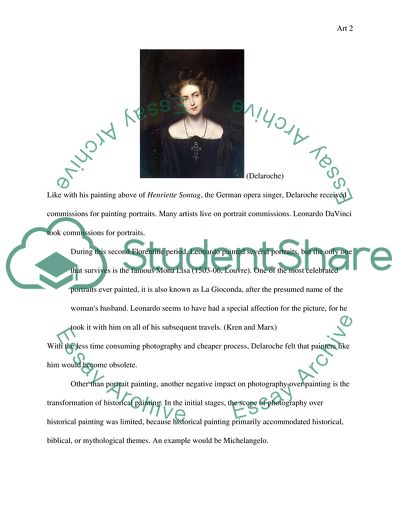Cite this document
(The Origin and Development of Photography Essay Example | Topics and Well Written Essays - 1250 words, n.d.)
The Origin and Development of Photography Essay Example | Topics and Well Written Essays - 1250 words. https://studentshare.org/visual-arts-film-studies/1728347-consider-the-effects-of-photography-invented-in-the-mid-nineteenth-century-on-art-in-the-later-nineteenth-and-early-twentieth-century
The Origin and Development of Photography Essay Example | Topics and Well Written Essays - 1250 words. https://studentshare.org/visual-arts-film-studies/1728347-consider-the-effects-of-photography-invented-in-the-mid-nineteenth-century-on-art-in-the-later-nineteenth-and-early-twentieth-century
(The Origin and Development of Photography Essay Example | Topics and Well Written Essays - 1250 Words)
The Origin and Development of Photography Essay Example | Topics and Well Written Essays - 1250 Words. https://studentshare.org/visual-arts-film-studies/1728347-consider-the-effects-of-photography-invented-in-the-mid-nineteenth-century-on-art-in-the-later-nineteenth-and-early-twentieth-century.
The Origin and Development of Photography Essay Example | Topics and Well Written Essays - 1250 Words. https://studentshare.org/visual-arts-film-studies/1728347-consider-the-effects-of-photography-invented-in-the-mid-nineteenth-century-on-art-in-the-later-nineteenth-and-early-twentieth-century.
“The Origin and Development of Photography Essay Example | Topics and Well Written Essays - 1250 Words”. https://studentshare.org/visual-arts-film-studies/1728347-consider-the-effects-of-photography-invented-in-the-mid-nineteenth-century-on-art-in-the-later-nineteenth-and-early-twentieth-century.


